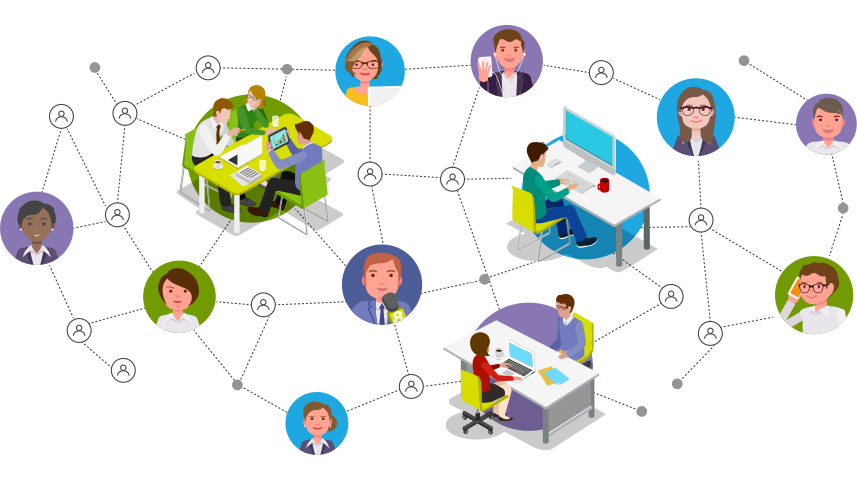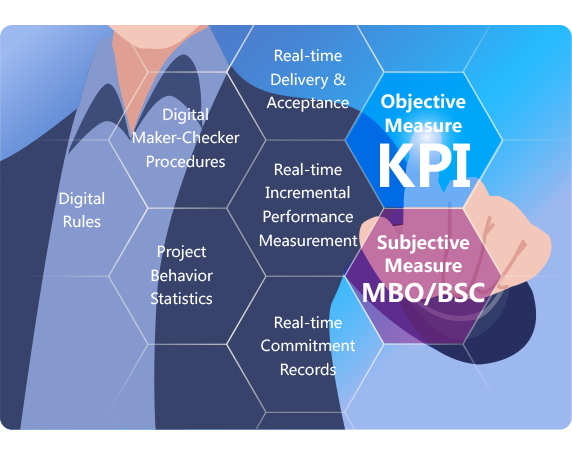
scenarios

The converging forces of globalization, technological advancement and continuing market flux are creating a need to draw talents from new sources, to do so more quickly and adaptably, and to be prepared to work more closely alongside people who are external to the organization. Organizations are increasingly finding themselves managing an open workforce in which talents are spread across in-house employees, contractors and freelancers and external staff augmenters, BPO/ITO outsourcers and other business partners.
 allows organizations to reduce costs but it also unlocks a whole range of opportunities. Leveraging
allows organizations to reduce costs but it also unlocks a whole range of opportunities. Leveraging  open workforce capabilities, organizations can increasingly collaborating with clients, vendors and other business partners to deliver new products and services.
open workforce capabilities, organizations can increasingly collaborating with clients, vendors and other business partners to deliver new products and services.  can also give organizations much greater speed and flexibility to redeploy talents and augment their capabilities more effectively.
can also give organizations much greater speed and flexibility to redeploy talents and augment their capabilities more effectively.

 allows you to publish your job openings and it will automatically match them with the skill sets of the registered job seekers. New job seekers can keep coming in and their skill sets will be matched against your job requisitions until they expire. Your job requisitions will be pushed to the job opportunity app of each matched job seeker. It will be up to each matched job seeker to decide whether to apply for the job or not.
allows you to publish your job openings and it will automatically match them with the skill sets of the registered job seekers. New job seekers can keep coming in and their skill sets will be matched against your job requisitions until they expire. Your job requisitions will be pushed to the job opportunity app of each matched job seeker. It will be up to each matched job seeker to decide whether to apply for the job or not.

When a number of matched candidates decide to apply,  will automatically match the available interview time slots for the job seekers of the highest score first and set up interviews and track their results.
will automatically match the available interview time slots for the job seekers of the highest score first and set up interviews and track their results.
 allows multiple organizations to combine their attractiveness to job seekers to conduct syndicated recruitments. Each candidate can easily observe her marketability by seeing the number of job opportunities available to her each week.
allows multiple organizations to combine their attractiveness to job seekers to conduct syndicated recruitments. Each candidate can easily observe her marketability by seeing the number of job opportunities available to her each week.

Technologically, the decentralized recruitment, digitalized policies and automated engagement and payment in an open workforce aren’t the hardest. The hardest part is the decentralized trust, meaning the time and cost of applying current due diligence, credentialing and approval procedures to onboard the job seeker into an approved list of job seekers would take too long and cost too much money.
 provides commitment management to allow proper categorization of commitments and proper recording of them for each engagement. The commitment records of each job seeker is for lifetime and can’t be erased.
provides commitment management to allow proper categorization of commitments and proper recording of them for each engagement. The commitment records of each job seeker is for lifetime and can’t be erased.

 extends the project team concept to the external talents who are contractors, freelancers or belong to the business partners such as clients, vendors and outsourcers.
extends the project team concept to the external talents who are contractors, freelancers or belong to the business partners such as clients, vendors and outsourcers.  also allows planned and unplanned miners in parallel to reach the acceptance goal of a deliverable.
also allows planned and unplanned miners in parallel to reach the acceptance goal of a deliverable.
Besides supporting digital policies, procedures, Service Level Agreements (SLA) and payment terms,  supports straight-thru-processing for time and material metering and approvals so that payments and rewards can be released according to the digital payment terms.
supports straight-thru-processing for time and material metering and approvals so that payments and rewards can be released according to the digital payment terms.
 also supports performance-based pricing for subsequent contracts as well as commitment management which can affect the performer’s lifetime records for the purpose of motivating the performer to do a good job.
also supports performance-based pricing for subsequent contracts as well as commitment management which can affect the performer’s lifetime records for the purpose of motivating the performer to do a good job.

Today’s organizations urgently need new tools to help them manage performance across today’s networks of employees and collaborators. That gets harder when you rely on people who don’t formally report to you. According to a survey study, nearly one third of respondents indicated that their companies lacked a clear line of sight over the cost and performance of their external talents.
Organizations need a new approach to performance management to ensure that they are mobilizing all their resources effectively.  supports objective KPI measure and subjective MBO/BSC types of measure based on digital rules and procedures, behavior statistics and real-time delivery-acceptance results.
supports objective KPI measure and subjective MBO/BSC types of measure based on digital rules and procedures, behavior statistics and real-time delivery-acceptance results.
Advanced performance management is the fundamental building block to make open workforce work for your organization.




